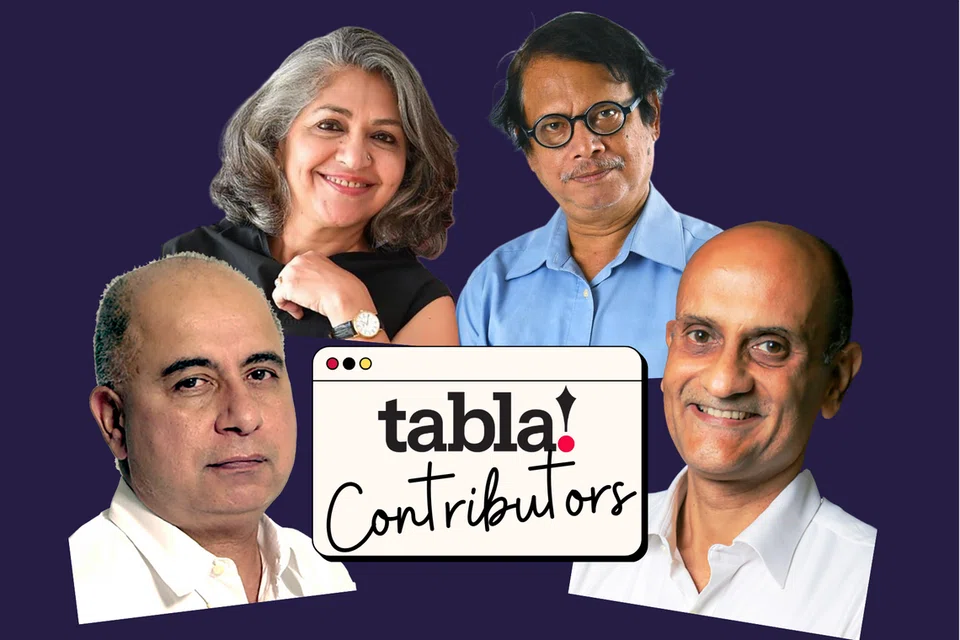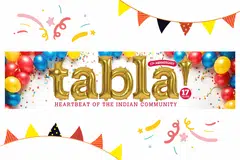Since its launch in 2008, tabla! has filled a unique space in Singapore’s media landscape as an English-language weekly that aims to capture the voices of the Indian community. Now, as the publication turns 17, some of its long-time op-ed contributors reflect on their personal writing journeys with tabla! and on what it means for a community to see itself and its stories represented in print.
Asad Latif, 68, was already at The Straits Times when he first encountered tabla!. A seasoned editorial hand and a measured observer of South Asian affairs, he was struck by its mission. “It catered to expat Indians, which is what interested me,” he said. Singapore’s newspaper landscape, divided into the English-dominant Straits Times and Business Times, and vernacular press like Tamil Murasu, tabla! filled a void, according to him.
“It is the only English-language newspaper that caters to the Indian community here. Within that, it contextualises news from India in a way that makes sense to readers here,” he said. For Mr Asad, the very name of the paper holds metaphorical power. The tabla, an Indian classical percussive instrument universally recognised across Indian cultures, he said, symbolises what the publication itself has always aimed for: rhythm and unity. “It’s a word every Indian would understand. It’s deeply South Asian, and it can’t be duplicated.”
Even in an age of digital fragmentation, where social media has supplanted traditional channels, tabla!’s tactile presence continues to carry weight, while also launching its digital offering, a website. “Keeping print alive is a challenge everywhere,” Mr Asad said, noting that tabla!’s print is a “well-crafted, palatable read” that “doesn’t overwhelm the reader.”
More than that, he added, it fits the Singaporean ethos. “Most of us speak our mother tongues at home. But outside our homes, we speak English, which is the common lingua franca. That’s where tabla! operates. It is inclusive, like Singapore.”
For Mr Kushwant Singh, tabla! has been a different kind of lifeline. “I was interested in writing a humour column,” he said. The editors were open. A small space for lightness, nestled within a publication with serious aims, evolved into a weekly ritual. At 72, Singh continues to draw inspiration from the world around him. “Keeping fit, gardening, and writing for tabla! keeps me busy. ”
He remembered when the paper first started gaining traction. “People are now noticing it more.” What sets tabla! apart for him is tone. “It’s relaxing. It gives me a different window into Indian culture.”
For Mr Paddy Rangappa, it started with a pitch. “I had written this serious article on construction workers in Singapore called The Other NRI,” he said. “They (the tabla! team) liked it so much they put it on the cover.” That was March 18, 2009. He briefly remembered seeing the paper for the first time at a temple he frequented, as part of its organic, communal distribution. Since then, he started reading it more regularly.
While his first piece was deeply reported, his personal leaning is toward humour, and that’s where he’s headed. “I’ve been writing humour since school. After I retired last year, I started doing keynotes about humour in the workplace.” His podcast, Jest Business, co-hosted with a former colleague, teaches managers how to use humour more effectively. Like Singh, he sees tabla! as a kind of creative home. “There’s a lightness to it.”
Theatre artist and regular contributor Daisy Irani recalled her journey with tabla! began alongside her not-for-profit company, HuM Theatre. Both were looking to serve the interests of the quickly expanding Indian community in Singapore. Daisy agreed with Asad, stating that the sound of the tabla is the manifestation of the Indian heartbeat. “I particularly like the name because it is a word that cuts across the myriad Indian languages and dialects. Everybody in India dances to the rhythm of the tabla!”
Observing tabla!’s evolution, she noted, “As long as I have known the print version of tabla! to be in existence, all I know is that the paper has flown off the shelves every Friday. Sometimes it’s difficult to acquire a copy. This can only mean that the readers are happy.” She added that the content has adapted to the ever-changing demographics of the diaspora and that by anchoring stories in Singapore, tabla! has played a vital role in helping the complex and diverse Indian communities integrate into a socially responsible whole.
Looking ahead, Daisy hopes tabla! will “build on its heritage and evolve into a paper that attracts all Singaporeans into their Indian ethos, invite them into our lives, into our shared concerns, into our culture, cuisine, and colour.” When asked to describe tabla! in one word, Daisy chose “belonging.”
When asked about the future, each contributor echoes a version of the same sentiment – keep doing what you’re doing.




